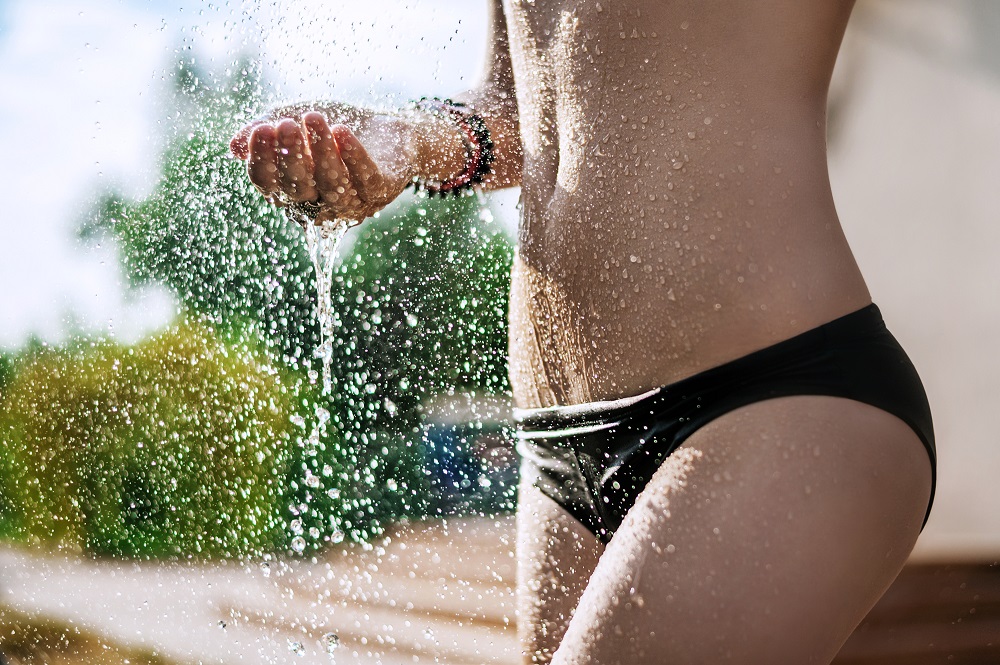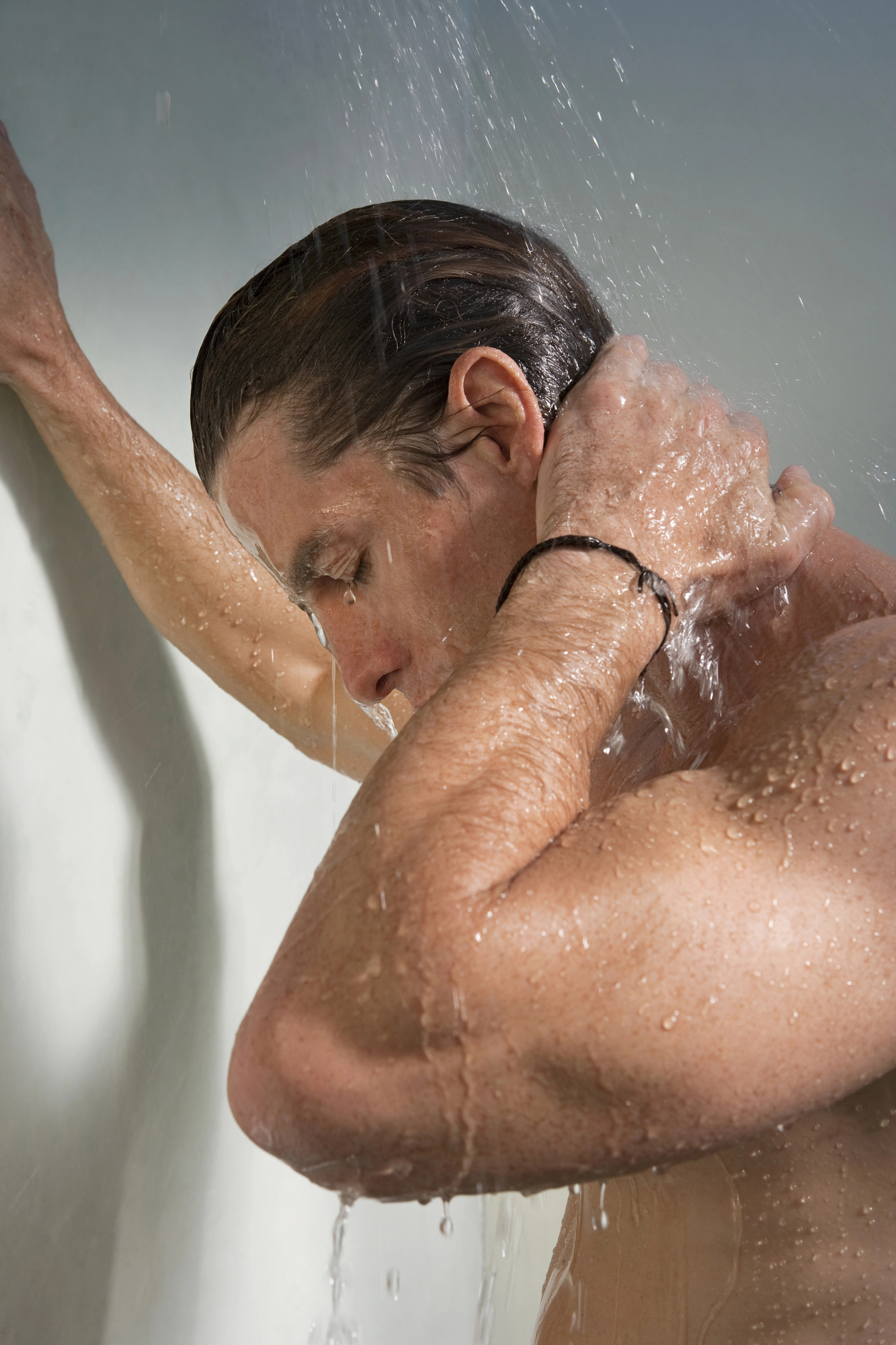Sterling silver jewelry, with its allure of elegance and durability, often becomes an everyday staple for many, cherished not just for its aesthetic but also for the quality it embodies. It's no surprise then that some find it hard to part with their treasured pieces, opting to keep them on at all times, even in the shower. This raises an important question, "Can I shower with silver bracelet?" This blog will explore if you can shower with sterling silver bracelets, offering insights and tips to ensure your beloved accessory remains as captivating as the day you first adorned it.

Yes, you can wear your silver bracelet in the shower. Silver is generally resistant to water, but it's essential to consider other factors like soap and shampoo, which can impact its luster over time.
Silver bracelets aren't exclusively accessories but also delicate pieces that require proper care. Showering with a silver bracelet can lead to various issues, impacting both the appearance of the jewelry and potentially causing discomfort for the wearer. Some common issues are as below:
Showering with a silver bracelet exposes it to tarnishing. Tarnish occurs when silver reacts with sulfur compounds in the air or water, forming a dull, discolored layer on the surface of the metal. This can diminish the shine and overall aesthetic appeal of your silver bracelet over time.
What about other silvers? Can I shower with sterling silver bracelet? Showering with a sterling silver bracelet is generally safe. That’s because it is an alloy made up of 92.5% silver and 7.5% other metals, usually copper. This composition enhances the durability of the silver and makes it suitable for everyday wear, including exposure to water. Take Merdia Solid 925 Sterling Silver Bracelet as an example, Crafted from pure 925 sterling silver, it boasts not just a brilliant shine but also an inherent durability against tarnishing. Designed with the modern wearer in mind, this twisted bracelet can gracefully withstand the rigors of daily life, including occasional showers, without losing its luster.
Regardless, it's still key to note that prolonged exposure to harsh chemicals or certain substances, such as chlorine in swimming pools or harsh soaps, can eventually tarnish the silver.
The chemicals present in many soaps can leave a residue on your silver bracelet when you shower with it. This residue may accumulate, affecting the luster and cleanliness of the jewelry. Over time, the soap residue can contribute to the dulling of the silver surface, requiring additional cleaning and maintenance.
If you live in an area with hard water, showering with a silver bracelet may expose it to mineral deposits. These deposits, primarily made up of calcium and magnesium, can build up on the bracelet's surface, creating a stubborn film that is challenging to remove. Hard water deposits can compromise the appearance of the silver and necessitate special cleaning measures.
The mechanical wear caused by water pressure and friction during a shower can contribute to the deterioration of a silver bracelet. Over time, constant exposure to water can lead to scratches, dents, or other forms of damage. This wear and tear can be particularly noticeable on intricate designs or detailed patterns present on the bracelet.
Showering with a silver bracelet may exacerbate skin sensitivity issues for some individuals. The combination of water, soap, and the metal's presence can lead to skin irritation or allergic reactions. It's essential to consider your skin type and potential sensitivities when deciding whether to wear your silver bracelet in the shower.
Showering with an elegant silver bracelet requires some attention to detail to ensure the longevity and luster of your cherished accessory. Here are some practical tips to follow when considering wearing your silver bracelet in the shower.

Taking care of your silver bracelet is key to ensuring its longevity and maintaining its exquisite appearance. Following a few simple care practices can make a big difference in preserving the shine and quality of your cherished accessory.
To keep your silver bracelet looking its best, regular polishing is crucial. Use a soft, non-abrasive cloth to gently buff away tarnish and restore the shine. Pay attention to intricate details and crevices.
Tips:
Air exposure contributes to tarnishing, so storing your silver bracelet in an airtight bag can significantly slow down this process. Consider using small, sealable plastic bags or pouches designed for jewelry storage.
Tips:
Direct sunlight can accelerate the tarnishing of silver and cause discoloration. When storing your bracelet, choose a cool, dark place to shield it from harsh light.
Tips:
Chemicals found in perfumes, lotions, and harsh cleaning agents can damage the silver's surface. Minimize contact with these substances to preserve your bracelet's integrity.
Tips:
Regular cleaning with a soft, lint-free cloth helps remove fingerprints and dirt, maintaining the bracelet's polished appearance.
Tips:
Exposing your silver bracelet to chlorinated water in swimming pools or cleaning agents can cause damage. Always remove the bracelet before engaging in such activities.
Tips:
Regularly inspect the clasps and links for any signs of wear, damage, or loosening. Timely identification of issues can prevent further damage.
Tips:
When regular polishing isn't enough, consider using a silver-cleaning solution to remove stubborn tarnish and restore the bracelet's brilliance.
Tips:
Natural oils from your skin can contribute silver to tarnishing. Handle your silver bracelet with clean hands to minimize oil transfer and maintain its luster.
Tips:
Wearing the same bracelet daily can lead to accelerated wear and tear. Rotate your silver bracelet with other pieces to distribute the impact and prolong its lifespan.
Tips:
Overall, showering with your silver bracelet can compromise its beauty over time. Understanding the effects of water and chemicals on silver is crucial for preservation. By adopting a few mindful care practices, you can ensure your silver jewelry continues to sparkle and charm, standing the test of time and daily routines.
Getting your silver bracelet wet occasionally won't immediately damage it, but frequent exposure to water, especially chlorinated or salty, can lead to tarnishing and deterioration over time. It's best to keep silver dry and clean it regularly to maintain its shine and prevent damage.
To clean a wet silver bracelet, gently wipe it with a soft, dry cloth to remove water and any residues. Avoid abrasive materials that might scratch the surface.
To protect your silver bracelet, consider removing it before showering. Store it in a dry place to prevent prolonged exposure to moisture and chemicals. This helps maintain its appearance and longevity.
Can I sleep with a bracelet on? Yes, of course. Learn the best practices for nighttime comfortably with your favorite accessory in this article.
Read MoreLearn how to make a rosary bracelet and explore the process of crafting devotion into wearable artistry, perfect for personal use, heartfelt gifts, and more.
Read MoreUncover simple steps on how to make a gimp bracelet. Includes materials needed, basic & advanced techniques, and patterns for your first craft project.
Read MoreStep into crafting elegance with our guide on how to make a cufflink bracelet. Transform, customize, and add a personal touch to your style.
Read More